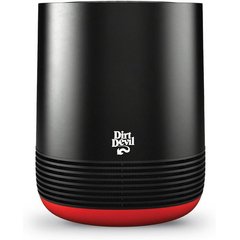Flemish Giant Rabbit
The Flemish Giant rabbit (also known as the Gentle Giant) is one of the largest breeds of domestic pet rabbits. Adults typically weigh between 15–20 pounds and can reach around 2.5–4 feet in length when they fully stretch out.
The typical Flemish Giant rabbit lifespan is between 8–10 years. Females may have a large dewlap (fold of skin) under their chin and their average litter size is 5–12 offspring. Flemish Giant rabbits have long upright ears, a semi-arched back, broad hindquarters, and powerful back legs.
One of the oldest recognized breeds in the world, the Flemish Giant may have origins dating back to the 16th century. The breed was further developed in Belgium around 1860. These rabbits were initially considered a “utility” breed because they were a source of meat and fur. Flemish Giant rabbits were imported to the U.S. from England and Belgium in the early 1890s, and they were recognized by the American Rabbit Breeders Association (ARBA) in 1910.
Caring for a Flemish Giant
Flemish Giant rabbits are best known for their size, but they are also docile, making them wonderful family pets. Friendly and social, Flemish Giants like to spend time outside of the cage with their humans and may even befriend other pets in the home.
Flemish Giants need more space than other, smaller rabbits such as Holland Lops or the Netherland Dwarf. Their cage should be a minimum of 36 inches wide, 36 inches tall, and 120 inches long to allow them to stretch out and move comfortably. Cage size should be doubled for each rabbit living in the enclosure.
Additionally, these large rabbits need lots of supervised time outside the cage to get exercise and socialization. Flemish Giants can be trained to use a litter box and are, overall, a fairly clean rabbit.
Recommended Products
Flemish Giant Health Issues
Flemish Giant rabbits are usually robust and healthy, but they are prone to a few health issues:
Sore Hocks
Their heavy body weight means Flemish Giants are at risk for pressure sores or ulcerations on the bottom of their back feet. This can typically be avoided by housing your rabbit in a cage with a solid floor such as fleece over a yoga mat, instead of wire mesh. Carpet can be abrasive, so it should be avoided. Cages should be kept very clean so urine and feces do not get stuck to the feet and cause irritation or infection.
Ear Conditions
Flemish Giants have long upright ears that are somewhat susceptible to ear bacteria, or less often with mites. Regular ear cleaning, as advised by your veterinarian, so that you do not injure or damage your rabbit's ear drum, is important to avoid these conditions, especially if your rabbit lives or spends time outside.
Obesity
Flemish Giants love to eat! Lots of exercise and a proper diet of mostly hay and limited pellets and treats will help keep these large rabbits fit and healthy. Flemish giants may become obese, so it's important to limit the number of pellets and treats they receive, to prevent them from gaining too much weight.
Upper Respiratory Infections
Rabbits in general have sensitive respiratory systems, and Flemish Giants are no exception. Paper-based, dust-free bedding such as Carefresh and good cage sanitation will reduce your rabbit's chances of developing an upper respiratory infection.
Gastrointestinal Stasis
While rabbits cannot vomit, they can develop a serious gastrointestinal (GI) disease called GI stasis in which they stop eating, stop passing stool, and become very lethargic. GI stasis is a very serious, potentially life-threatening condition that can have several underlying causes. If you notice any of these signs in your rabbit, seek veterinary care right away.
What to Feed a Flemish Giant
Flemish Giant rabbits need plenty of roughage in their diet to maintain a healthy digestive system. Each rabbit should eat their body weight in hay every day. Consider the following diet guidelines when feeding your Flemish Giant:
-
Unlimited amounts of hay
-
a smaller amount of fresh greens
-
1/4 cup of fortified pellets/4–5 pounds of rabbit per day
Treats should be given only occasionally, with high-fat/high-sugar treats being avoided.
A constant source of fresh, clean water is necessary as well. On average, an adult Flemish Giant rabbit can drink as much water as a 25-pound dog every day.
Flemish Giant Temperament and Behavior
These “gentle giants” live up to their nickname because they are known to be easygoing and docile. The big bunnies are generally patient, calm, and tolerant, even with small children and other animals. While playtime and exercise are important, Flemish Giants also enjoy quiet time with their humans being petted and snuggled. Even though they are generally extremely good natured, Flemish Giants, like other rabbits, should always be supervised around children.
Male Flemish Giant rabbits are typically calmer than females. Females may be a bit more territorial and destructive than males, but overall Flemish Giant rabbits are good-natured.
Flemish Giant Grooming Guide
Routine grooming is not only necessary to keep your Flemish Giant healthy, but it also provides a great opportunity to bond with your rabbit. Their fur is thick, glossy, and smooth, and they should be brushed regularly to help remove loose hair that can contribute to hairballs.
A rabbit's toenails grow continuously and need to be trimmed every four to six weeks. Inspect your Flemish Giant's ears weekly and speak to your veterinarian about cleaning your bunny's ears with ear cleaning wipes if you notice debris and wax build up.
If your Flemish Giant gets dirty, spot clean those areas with warm water on a towel or grooming wipes. Never bathe or submerge your rabbit in water, as this can be stressful and cause matts in the fur. If your rabbit's fur becomes excessively soiled or matted, speak to your veterinarian about their bathing your bunny after administering a mild sedative to decrease stress.
Considerations for Pet Parents
Perhaps the most important thing to consider when deciding to bring a Flemish Giant rabbit into your home is space. Flemish Giants are among the largest of rabbit breeds, so they require extra-large cages as well as plenty of room to roam and play outside their cage.
This big bunny is friendly and social and thrives on interaction with their family members. Flemish Giant rabbits do not do well with isolation, and if they become frustrated with too much time alone in their cage they can develop behavioral issues like aggression, biting, or overgrooming.
Flemish Giant FAQs
Is a Flemish Giant bunny a good pet?
Flemish Giants make great pets for people that have plenty of space and time to spend with them.
Are Flemish Giants hard to take care of?
Aside from needing more room than smaller rabbits, Flemish Giants are overall clean rabbits and relatively easy to care for compared to some other rabbit breeds.
Are Flemish Giant bunnies cuddly?
Easygoing and affectionate, most Flemish Giants love to relax and spend time cuddling with their family members.
Are Flemish Giants easy to train?
Their friendly and social nature makes Flemish Giant rabbits eager to please. This eagerness along with typical rabbit intelligence make Flemish Giants easy to train.
What does a Flemish Giant rabbit cost?
On average, adopting a Flemish Giant can cost anywhere from $30 to several hundred dollars, depending on the rabbit’s breeding and if it is show-quality.
Featured Image: iStock.com/krithnarong




